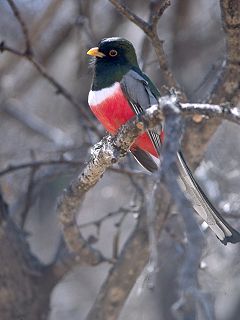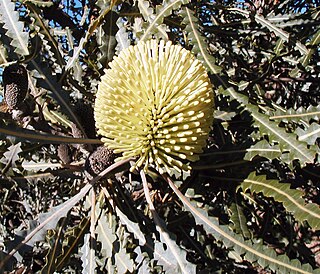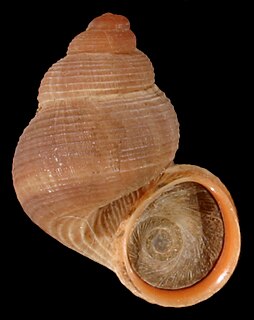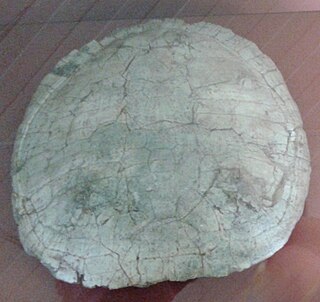Related Research Articles

Caenorhabditis elegans is a free-living transparent nematode about 1 mm in length that lives in temperate soil environments. It is the type species of its genus. The name is a blend of the Greek caeno- (recent), rhabditis (rod-like) and Latin elegans (elegant). In 1900, Maupas initially named it Rhabditides elegans. Osche placed it in the subgenus Caenorhabditis in 1952, and in 1955, Dougherty raised Caenorhabditis to the status of genus.

The elegant trogon is a near passerine bird in the trogon family. Along with the eared quetzal, it is the most poleward-occurring species of trogon in the world, ranging from Guatemala in the south as far north as the upper Gila River in Arizona and New Mexico. The most northerly populations of subspecies ambiguus are partially migratory, and the species is occasionally found as a vagrant in southeasternmost and western Texas.

Banksia elegans, commonly known as the elegant banksia, is a species of woody shrub that is endemic to a relatively small area of Western Australia. Reaching 4 m (13 ft) high, it is a suckering shrub that rarely reproduces by seed. The round to oval yellow flower spikes appear in spring and summer. Swiss botanist Carl Meissner described Banksia elegans in 1856. It is most closely related to the three species in the subgenus Isostylis.

The ashy gecko is a species of gecko native to Cuba and Hispaniola. It is a small species, dark in color with many white spots. It is also a good climber. Ashy geckos have been introduced to a few small islands in southernmost Florida, and have established populations there.

Littorinoidea are a superfamily of both sea snails and land snails which have a gill and an operculum, terrestrial and marine gastropod mollusks in the clade Littorinimorpha.

Tugali is a genus of small sea snails or limpets, a marine gastropod mollusc in the family Fissurellidae, the keyhole limpets and slit limpets.

Oenopota is a genus of sea snails, marine gastropod mollusks in the family Mangeliidae.

Cantharus is a genus of sea snails in the family Pisaniidae.

Stenocrepis is a genus of beetles in the family Carabidae, containing the following 31 species:

Coleoxestia is a genus of beetles in the family Cerambycidae, containing the following species:
Tropidion is a genus of beetles in the family Cerambycidae, containing the following species:

Anemonia is a genus of sea anemones belonging to the family Actiniidae.
Chorizocarpa is a genus of ascidian tunicates in the family Styelidae.
Distomus is a genus of ascidian tunicates in the family Styelidae.
Cantharus elegans is a species of sea snails in the family Pisaniidae, the true whelks. It is found in Panama and Mexico.
Chelonus elegans is a species of wasp in the family Cheloninae.

Cleopus is a genus of true weevils in the subfamily Curculioninae.

Pelargonium elegans is a species of flowering plants in the family Geraniaceae.

Bauruemys is an extinct genus of turtles in the family Podocnemididae.
Gymnema elegans is a species of plants in the family Apocynaceae. It is found in Tamil Nadu.
References
- ↑ Cenni zoologici ossia descrizione sommaria delle specie nuove di animali discoperti in diverse contrade del regno nell'anno 1834. OG Costa, 1834, page 70